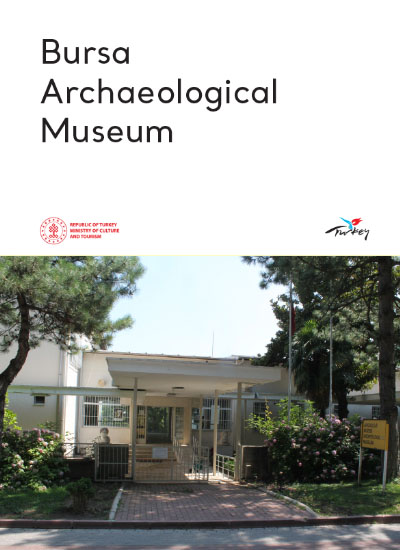The Bursa Museum was founded on 1st September 1904 as a branch of the General Directorate of Imperial Museum, in a section of Bursa Male High School. Azmi Bey, the director of National Education at the time, was instrumental in its establishment. The museum continued to operate in this capacity until 1930, when it was converted into a directorate and relocated to the Green Madrasa, which was constructed in Yeşil by Çelebi Sultan Mehmet. The museum's archaeology section was moved in 1972 with the construction of the modern building in the Cultural Park. Bursa is situated in the northwest of the Anatolian peninsula, at the intersection of the Asian and European continents. Its rich geography has enabled it to maintain its significance from prehistoric times to the present day. The city was a significant centre for prehistoric settlements, as well as those in the Bithynia and Mysia regions during ancient times. The Bursa Museum has a collection of over 60,000 artefacts and is one of Turkey's most extensive museums. Hall I (Miocene Epoch-Phrygian Kingdom) The hall displays a range of artefacts and findings from various historical periods, including the Paşalar fossil bed finds from the Middle Miocene period in Mustafakemalpaşa, Şahinkaya cave finds dated to the Middle Paleolithic Age, and artefacts from Neolithic, Chalcolithic, and Bronze Age settlements in and around Bursa. Additionally, there are artefacts and findings from the Assyrian trade colonies Age, Hittite civilization, Transcaucasian culture, Urartu Kingdom, Phyrg Kingdom, and Protogeometric period. The hall displays the remains of a 30-year-old woman, including grave finds, unearthed in Aktopraklık. In the same hall, there is also a model of the Aktopraklık Mound. The hall also contains six niche-type display cases showcasing artefacts that symbolize their respective historical periods. Stone Artefacts Hall The museum displays a collection of marble and stone artefacts, including grave stelae, sculptures, sarcophagi, ostatecs, and friezes in a planned chamber room. Noteworthy pieces in this hall include a bronze statue of Apollo and a bronze bust of Athena from the Roman Period, discovered in Miletopolis, an ancient city located within the borders of Mustafakemalpaşa district. The exhibited artefacts include grave stelae, sculptures, sarcophagi, ostatecs, and friezes. Hall II (Archaic Age-Eastern Roman/Byzantine period) This hall exhibits artefacts dating from the Archaic Period to the end of the Eastern Roman period, primarily discovered in Bursa and its surroundings. On display are the Archaic and Classical Age finds of the ancient city of Antandros, Miletopolis, Ahmetler Necropolis, and the Hellenistic period finds of Bursa tumulus. The exhibition showcases a variety of artefacts including Roman Glass Works, oil lamps, metal artefacts, seals, ornaments, toys, and medical instruments. Additionally, visitors can explore the coin section located on the mezzanine floor of the same hall. Üçpınar Tumulus Chariot Finds Hall The tumulus from the Akhamenids period, dating back to the sixth century BC, was discovered during a rescue excavation in 1988 in partnership with Bursa and Balikesir Museums. It has been reconstructed and is now exhibited along with its finds, which include wheel parts and horse harnesses found in situ at the entrance of the burial chamber. This hall exhibits a chariot reconstruction from the relevant period, based on archaeological finds. Additionally, three grave stelae are displayed, including two moulages constructed in the Greco-Persian style during the Persian rule in the centre of Satrapy of Daskyleion. This style was common throughout Anatolia between 545 and 333 B.C.
BURSA ARCHAELOGICAL MUSEUM


